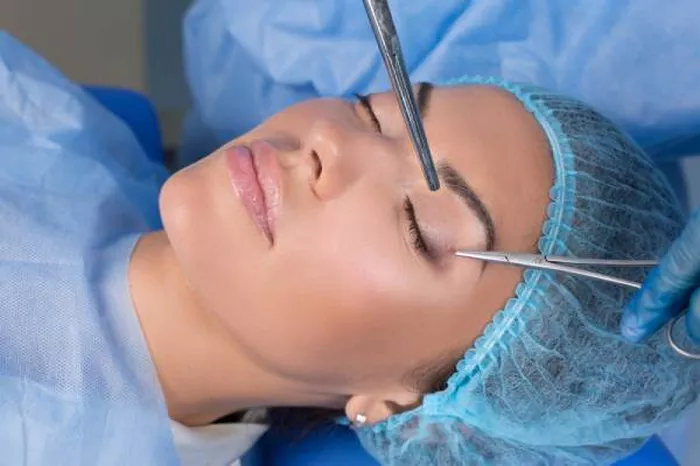The desire for youthful and refreshed eyes has led many individuals to explore options for eyelid rejuvenation. While surgical procedures like blepharoplasty have traditionally been the go-to solution for lifting sagging eyelids, advancements in the field of aesthetics have brought forth non-surgical alternatives. These non-invasive techniques offer the promise of achieving a lifted and more youthful appearance without the need for surgery. In this article, we will delve into the various non-surgical options available for eyelid lifting, the science behind their effectiveness, and considerations for those seeking non-surgical eyelid rejuvenation.
Understanding Non-Surgical Eyelid Rejuvenation
Non-surgical eyelid rejuvenation involves using various minimally invasive techniques to enhance the appearance of the eyelids without resorting to surgical intervention. These techniques aim to address concerns such as sagging skin, wrinkles, and puffiness around the eyes. While the results achieved through non-surgical methods may not be as dramatic or long-lasting as those of surgical procedures, they can offer a viable option for individuals seeking subtle improvements.
Non-Surgical Eyelid Rejuvenation Options
Dermal Fillers: Dermal fillers, often based on hyaluronic acid, are commonly used to restore volume and address fine lines and wrinkles around the eyes. By strategically injecting fillers into specific areas, a skilled practitioner can create a lifted and more youthful appearance. Fillers can also be used to address hollowing beneath the eyes, reducing the appearance of bags.
Botox and Dysport: Botulinum toxin injections, such as Botox and Dysport, can be used to relax the muscles around the eyes that contribute to wrinkles and crow’s feet. By weakening these muscles, the skin appears smoother, and the eyes can take on a more refreshed look.
Radiofrequency and Ultrasound Treatments: Radiofrequency (RF) and ultrasound devices deliver controlled energy to the skin, promoting collagen production and skin tightening. These treatments can help lift and firm sagging eyelids over time, resulting in a gradual improvement in appearance.
Laser Resurfacing: Laser treatments can target various concerns around the eyes, including fine lines, wrinkles, and uneven skin texture. Fractional laser resurfacing can stimulate collagen production and improve skin elasticity, leading to a lifted and smoother appearance.
Thread Lifts: Thread lifts involve the insertion of dissolvable threads beneath the skin to lift and support sagging tissue. While this technique can provide subtle lifting effects, results vary, and the longevity of the lift is typically shorter compared to surgical options.
Scientific Basis for Non-Surgical Eyelid Rejuvenation
The effectiveness of non-surgical eyelid rejuvenation techniques lies in their ability to stimulate collagen production, restore volume, and improve skin texture. Here’s a brief overview of the scientific principles behind some of these methods:
Dermal Fillers: Hyaluronic acid fillers work by attracting and retaining water in the skin, plumping it up and smoothing out wrinkles. The injection process also triggers a mild inflammatory response, promoting collagen production over time.
Botox and Dysport: Botulinum toxin injections temporarily paralyze specific muscles, preventing them from contracting and causing wrinkles. The skin in the treated area becomes smoother as a result.
Radiofrequency and Ultrasound: These energy-based treatments stimulate collagen synthesis by heating the deeper layers of the skin. As collagen production increases, the skin becomes tighter and firmer, contributing to a lifted appearance.
Laser Resurfacing: Laser energy prompts the removal of damaged skin cells and triggers the body’s natural wound healing response. This process encourages collagen remodeling, resulting in smoother and more youthful skin.
Thread Lifts: The insertion of threads beneath the skin prompts a healing response, during which the body produces collagen around the threads. This collagen production contributes to tissue firming and a subtle lifting effect.
Considerations and Limitations
While non-surgical eyelid rejuvenation techniques offer several advantages, it’s essential to understand their limitations:
Temporary Results: The effects of non-surgical methods are typically temporary and may require maintenance treatments to sustain the results over time.
Subtle Changes: Non-surgical techniques offer more subtle changes compared to surgical procedures. They are well-suited for individuals with mild to moderate concerns.
Individual Variability: Results can vary based on individual factors such as skin type, age, and the severity of the concerns being addressed.
Treatment Frequency: Depending on the chosen method, multiple sessions may be necessary to achieve the desired outcome.
Practitioner Skill: The expertise of the practitioner performing the procedure greatly influences the results. Seek out experienced and qualified professionals for optimal outcomes.
Conclusion
Non-surgical eyelid rejuvenation has emerged as a valuable option for individuals seeking subtle improvements in the appearance of their eyelids. These techniques offer the advantage of minimal downtime, fewer risks, and the ability to achieve a more refreshed look without the need for surgery. While the results may not be as dramatic or long-lasting as those of surgical procedures, non-surgical methods can provide an excellent alternative for those who prefer a more gradual and natural-looking enhancement. Before undergoing any procedure, it’s crucial to consult with a qualified aesthetic professional to determine the most suitable approach based on individual goals and expectations.


